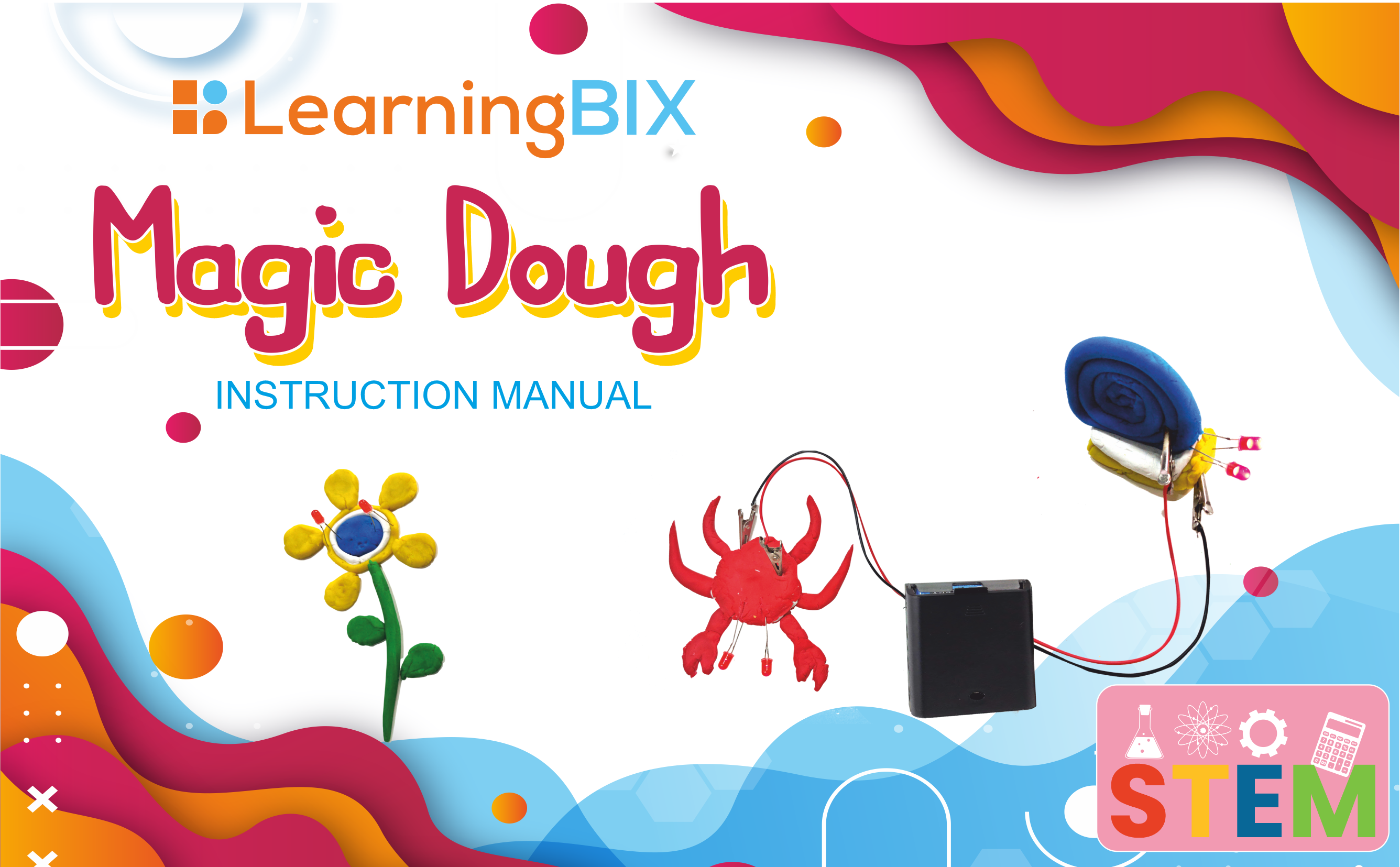
Making kids learn about electricity, and circuit building at an early age is not something that you will regret in life. There are several educational kits available in the market to let kids learn about electronic components. Magic Dough from LearningBIX is an electronic kit that is specifically designed for small kids to learn the basics of electronics in a simple and playful manner. This science educational kit teaches kids age 5 years and above about circuits, electricity, insulation, conductivity, etc. through the fun and play-way method. Various DIY activities and fun-filled activities, and hours of engagement are what this kit is all about. Want to know more about this electric dough kit? Sit back and read on!
Magic Dough Educational Kit: A Brief Introduction

Magic Dough is an electronic kit for kids age 5 years and above. The kit helps kids learn circuit building in a fun-filled manner. While kids get a hands-on learning experience in building electronic circuits, the kit helps kids in understanding basic electronics and circuit designing. The kit helps inculcate creative thinking and motor skills in kids.
The kit makes kids learn how to make dough structures, how electricity flows to lighten up the LEDs, generate sound with the help of a buzzer, how the DC motor works, and much more.
The educational kit is suitable for which age group children?
Magic Dough is one of the best electronic kits of 2022 that is designed for kids of age 5+. Any child interested in circuit building and who wants to get a hands-on learning experience will enjoy using the kit.
What’s in the kit?
This electronic building educational kit for kids comes with all the necessary electronic components and dough to help kids build circuits and get experiential learning.
Conducting Dough: The conducting dough is a colored clay non-sticky soft item. This will be used when we have to attach the battery with LED or any other electronic component. It has the property of electrical conductivity. Some common examples of conductors are metal, wire, iron rod, ionized water, aluminum, mercury, etc.
Buzzer: It is an active electronic component that acts as a sounding device in our circuit. It operates by applying a battery.
LED: LEDs are the lightning component in our circuit that can be operated by applying a voltage over the terminals. LEDs are polar devices, which means the +ve terminal will always be connected to the +ve terminal of the battery and -ve will be connected to the -ve of the battery.
Motor: The motor is an electronic device that operates overvoltage. Since a DC motor can be operated in both directions, the polarity of the battery matters when operating the Motor.
Button: A push-button or button is a simple switch mechanism to control some aspect of a machine or a process.
Insulating dough: It is a colorless dough that has the property of opposing the flow of electric charge. It acts as an insulator that does not conduct electricity. Some natural insulators which we encounter daily are Wood, Glass, Paper, Rubber, etc.
Battery Pack: The battery pack is the source of electricity through which all the other electronic peripherals (such as LED, Buzzer, Motor) are powered. The box contains four batteries that have a total voltage of around 6 Volts since each battery has 1.5 Volts.
How many ready-to-make electric dough projects are there in the kit?
This educational kit comes with 20 ready-to-make circuit projects with clear instructions mentioned alongside as to how the child needs to start and proceed further.
How many DIY activities can my child get to enjoy?
There are more than 30 DIY activities in the Magic Dough educational Kit for kids to get hands-on and enjoy while learning various circuit-building concepts.
What skills are developed with the Magic Dough Electronic kit?
The magic dough educational kit for kids will help in inculcating 21st-century skills like logical thinking, problem-solving, imagination, creativity, and critical thinking in them. While they learn to build circuits, they learn to make decisions, and patiently make circuits and if something goes wrong, they rework and don’t give up till they are finally able to do the correct circuit building. This is a simple and playful kit that your kid will love.

